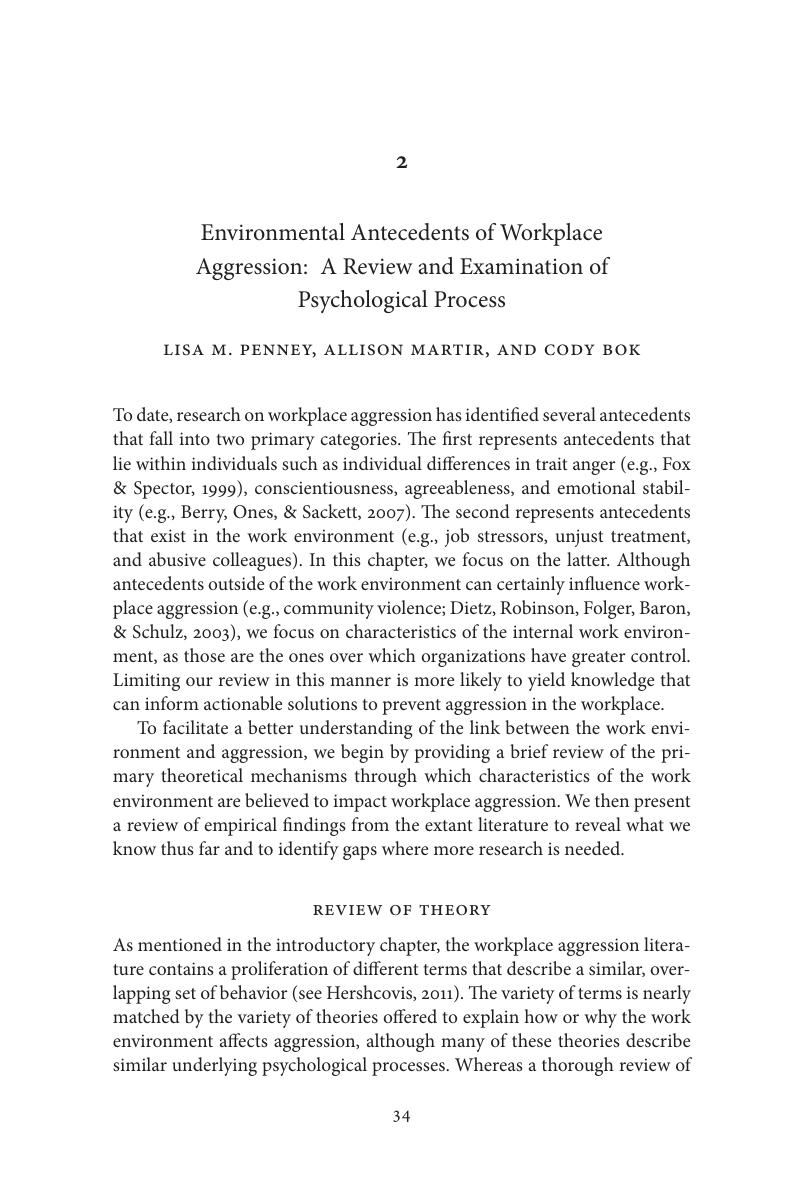Book contents
- Research and Theory on Workplace Aggression
- Research and Theory on Workplace Aggression
- Copyright page
- Dedication
- Contents
- Tables and figures
- Contributors
- Acknowledgments
- Introduction
- Part I The Measurement, Predictors, and Consequences of Workplace Aggression
- 1 Measurement of Workplace Aggression
- 2 Environmental Antecedents of Workplace Aggression
- 3 Damaging the Workplace
- Part II The Social Context of Workplace Aggression
- Part III The Prevention of Workplace Aggression
- Index
- References
2 - Environmental Antecedents of Workplace Aggression
A Review and Examination of Psychological Process
from Part I - The Measurement, Predictors, and Consequences of Workplace Aggression
Published online by Cambridge University Press: 16 March 2017
- Research and Theory on Workplace Aggression
- Research and Theory on Workplace Aggression
- Copyright page
- Dedication
- Contents
- Tables and figures
- Contributors
- Acknowledgments
- Introduction
- Part I The Measurement, Predictors, and Consequences of Workplace Aggression
- 1 Measurement of Workplace Aggression
- 2 Environmental Antecedents of Workplace Aggression
- 3 Damaging the Workplace
- Part II The Social Context of Workplace Aggression
- Part III The Prevention of Workplace Aggression
- Index
- References
Summary

- Type
- Chapter
- Information
- Research and Theory on Workplace Aggression , pp. 34 - 61Publisher: Cambridge University PressPrint publication year: 2017
References
- 5
- Cited by

